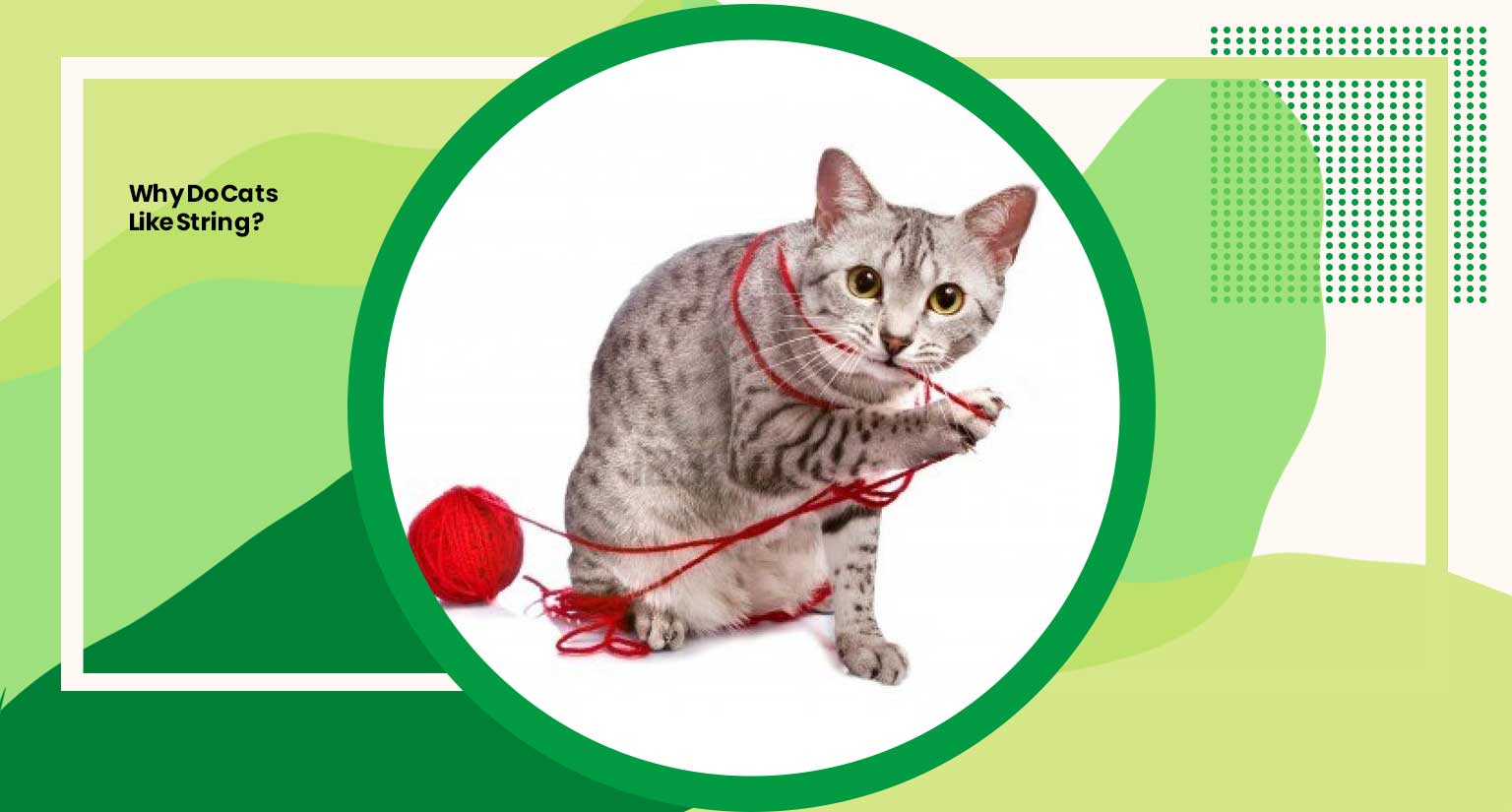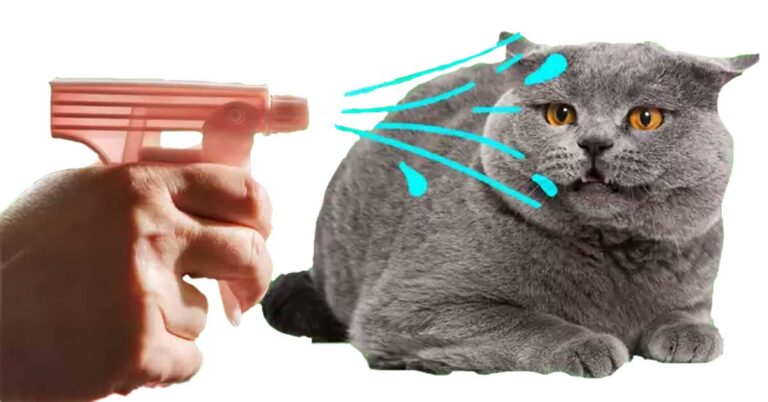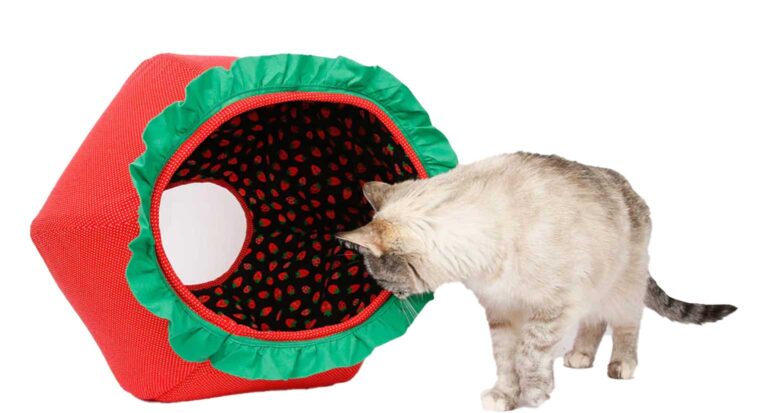Why Do Cats Like String?
Curiosity sparked and tails swishing with anticipation, there’s something special about a feline’s enchantment with string.
Delve into the captivating world of cat behavior and uncover the mystery behind their undying fascination with string.
Why do cats like string? This intriguing question unveils a deeper understanding of their instincts and preferences.
Understanding the perplexing allure that a simple piece of string holds for your furry companion involves delving into several intriguing reasons.
From instinctual behaviors rooted in their ancestral hunting instincts to the sheer playfulness it ignites, discover the multifaceted reasons driving your cat’s unyielding obsession.
Deciphering the Obsession
This primal instinct traces back to their ancestry, where survival depended on their adept hunting skills.
The fluttering, elusive nature of a string activates their inner predator, manifesting in pouncing, stalking, and swift movements—all reminiscent of a wild hunt.
It’s not just a piece of string; it’s an enthralling challenge that connects them to their evolutionary prowess.
The thrill of the chase keeps them engaged, mirroring the hunt in a safe and playful setting.
Playful Symphony
Beyond the instinctual allure, the simple act of playing with string releases a flood of joyous energy for your cat.
The unpredictable movements and the tactile sensation offer an irresistible invitation to engage, stimulating their mind and body.
Each flick and wiggle of the string orchestrates a playful symphony, fostering physical activity and mental stimulation crucial for their well-being.
The interactive nature of string play also strengthens the bond between you and your feline companion, creating moments of shared amusement and connection.
Why do cats swallow string?
Exploring the perplexing behavior of string swallowing in cats unveils a mix of instinctual curiosity and inadvertent consequences.
Delve into the reasons behind this peculiar action and the potential risks associated with this feline fascination.
Temptation to Swallow
Cats, driven by their innate curiosity, explore the world through taste and touch. When encountering string-like objects, their natural inclination to investigate leads to mouthing and, sometimes, swallowing.
This behavior is rooted in their hunting instincts, where they examine potential prey or intriguing items in their environment. The slender, wiggling form of string triggers this exploration, compelling them to interact with it orally.
Risks of Ingestion
Despite its innocuous appearance, swallowing string poses significant risks to a cat’s health. The linear structure of string can cause entanglement or blockages within their digestive system.
This can lead to severe complications such as intestinal damage, perforations, or blockages, which require immediate veterinary intervention. Recognizing the potential dangers of string ingestion highlights the importance of preventive measures.
Preventive Measures
To protect your feline companion, proactive measures are essential. Minimize access to strings, threads, or similar objects that could be mistaken for playthings. Option for safer alternatives like interactive toys designed specifically for cats.
Additionally, supervise playtime and store craft supplies, sewing materials, and household items like rubber bands securely out of your cat’s reach. Vigilance and a string-free environment are crucial in preventing accidental ingestion and potential health risks.
Reason for Why Do Cats Love String So Much?
The inexplicable allure that string holds for our feline friends stems from a combination of instinctual behaviors, sensory attractions, and playful inclinations.
Unravel the six captivating reasons driving their enduring fascination with this simple yet irresistible object.
Mimicking Prey
The mesmerizing allure of string lies in its ability to imitate the elusive movements of prey. Cats, instinctively wired for hunting, are drawn to these erratic movements, which resemble small creatures scurrying about.
This triggers their predatory instincts, prompting them to engage in a captivating chase. The darting, weaving, and fluttering motion of the string replicates the thrill of a hunt, fulfilling their inherent need to stalk and pounce.
Tactile Sensation
String’s diverse textures offer an intriguing sensory experience for felines. From the smoothness of certain strings to the slightly rough feel of others, each variation stimulates their sensitive paws and teeth.
This tactile engagement provides a satisfying sensation during play, making it a compelling choice for their playful endeavors.
Playful Interaction
The flexibility and versatility of string make it an ideal playmate for cats. Its adaptable nature allows for a myriad of play scenarios—whether it’s batting, pouncing, or chasing.
This interactive engagement not only encourages physical activity but also stimulates their minds, keeping them mentally sharp and agile.
Curiosity’s Call
Cats possess an inherent curiosity, drawn to investigate and explore unfamiliar objects within their environment. The slender, dangling form of string piques their interest, compelling them to investigate and interact.
Their curiosity is piqued by the unfamiliarity of the object, prompting them to indulge in playful interactions with the intriguing string.
Bonding Through Play
Engaging in playful string activities fosters a stronger bond between cat and owner. Participating in these shared moments of joy and amusement creates a sense of companionship and mutual enjoyment, strengthening the emotional connection between human and feline.
Environmental Enrichment
Providing opportunities for playful interaction with string contributes to a cat’s environmental enrichment. It prevents boredom, reduces stress, and offers an outlet for their innate instincts.
This engagement with string play promotes mental and physical well-being, ensuring a happier and more fulfilled feline companion.
Are Strings Hazardous for Cats?
What dangers do strings pose to our feline companions? Delve into the potential hazards and understand the risks involved when cats engage with these seemingly innocuous objects.
Yes, strings can pose serious hazards to cats, including risks of ingestion leading to intestinal blockages, choking, internal injuries, and the necessity for surgical intervention.
Hazards and Risks Associated with String
While string might seem innocuous, its interaction with cats can present significant dangers and potential health risks.
Delve into the potential hazards posed by string and understand the precautions necessary to safeguard your beloved feline friend.
String as a Swallowing Hazard
The most critical danger associated with string involves ingestion. Cats, driven by curiosity or playful exploration, may swallow string, mistaking it for a toy or prey.
The linear nature of string poses a severe risk as it can become entangled within the digestive tract.
This can lead to intestinal blockages, causing immense discomfort, pain, vomiting, and potentially life-threatening complications that require immediate veterinary attention.
Choking Hazard
Strings, ribbons, or threads can also pose a choking hazard for cats.
When playing with or chewing on string, there’s a risk of it becoming entangled around a cat’s tongue, leading to choking.
This immediate danger demands quick intervention to prevent asphyxiation or other serious injuries.
Internal Damage
If a cat swallows string, the movement of the foreign object within the digestive system can cause severe internal injuries.
The string may twist or bunch up, causing damage to the intestines and potentially leading to perforations or internal bleeding, posing a grave threat to their health.
Surgical Intervention
In cases where a cat has swallowed string, surgical intervention might be necessary to remove the foreign object. This invasive procedure carries risks and can lead to complications, making prevention of string ingestion crucial for a cat’s well-being.
Preventive Measures
To mitigate the risks associated with string, it’s vital to keep all strings, threads, ribbons, and similar items out of your cat’s reach. Choose safer, vet-approved toys specifically designed for feline play.
Supervise playtime closely and securely store craft supplies or household items that could be mistaken for toys or prey. Vigilance and a string-free environment are key in preventing potential hazards to your cat’s health and safety.
FAQs (Frequently Asked Questions)
1. What is it about string that fascinates cats?
Cats are drawn to string due to its resemblance to prey. The erratic movements mimic small animals, triggering their hunting instincts.
2. How does string play benefit my cat?
String play provides mental stimulation, encourages physical activity, and helps strengthen the bond between you and your cat.
3. Is string safe for my cat to play with?
While enjoyable, string can be hazardous if ingested, potentially causing intestinal blockages or choking. Supervision during play is essential.
4. Can I use alternatives to string for cat play?
Yes, opt for safer alternatives like interactive cat toys or feather wands designed specifically for feline entertainment.
5. Are there precautions I should take when my cat plays with string?
Always supervise playtime with string. Store it securely after play and prevent access to loose strings or threads to avoid accidental ingestion.



